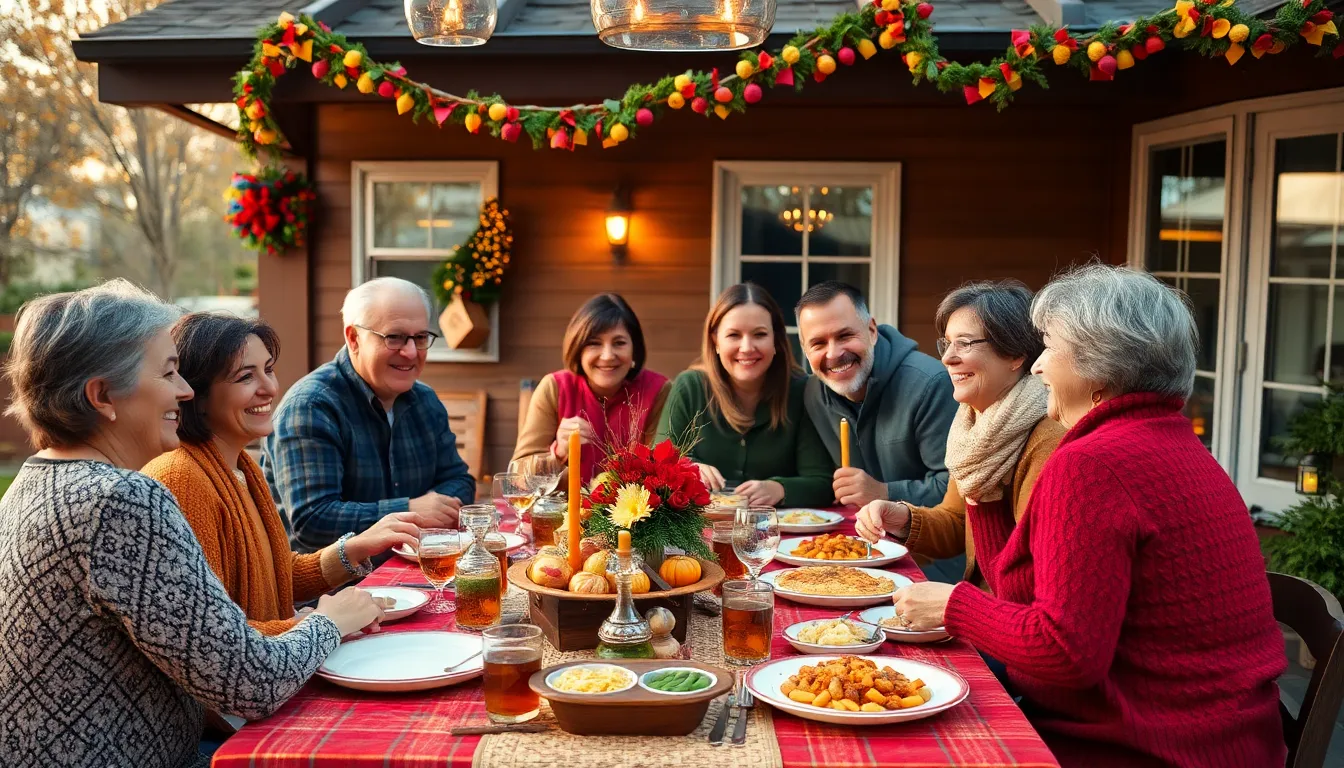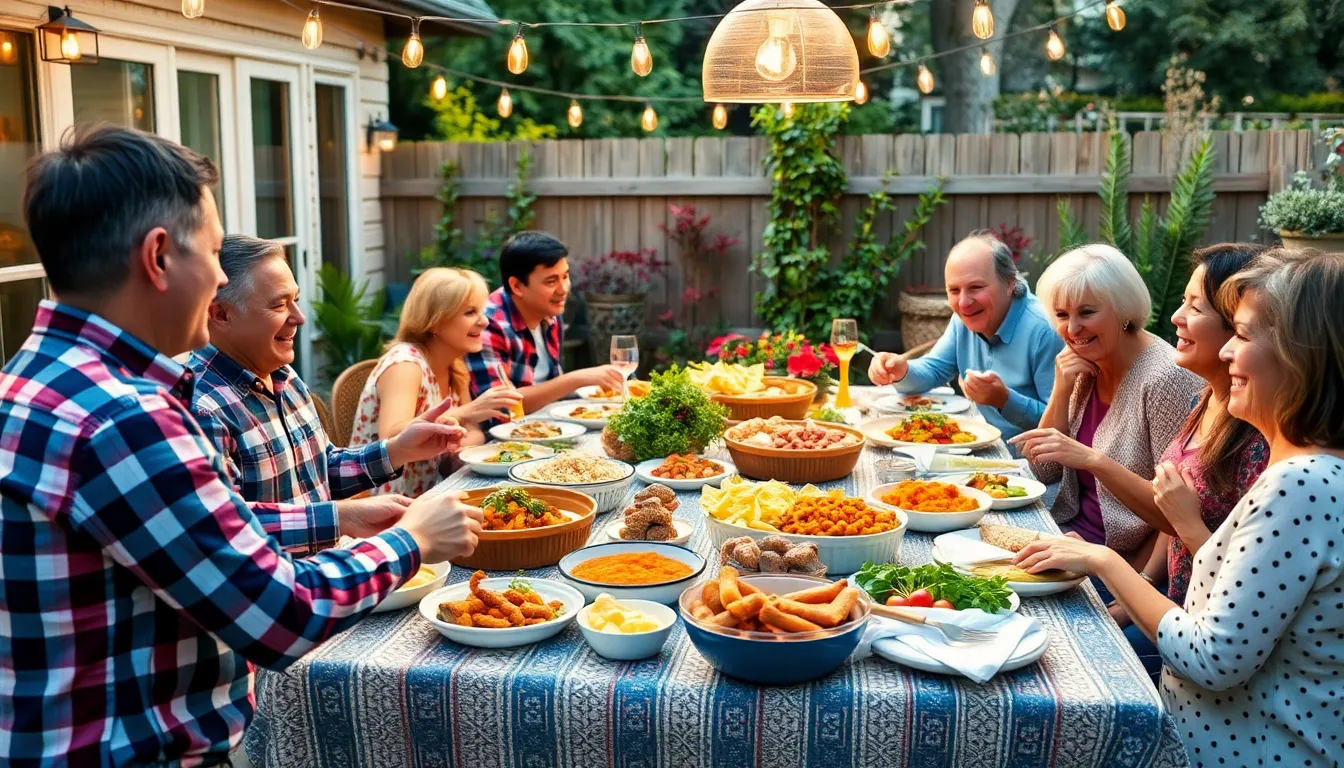Every family has its quirks, and local traditions often take the cake—or the pie, depending on the season. From that annual neighborhood potluck where Aunt Edna insists on bringing her infamous mystery casserole to the holiday rituals that make you question your sanity, these customs weave a colorful tapestry of shared experiences. They’re the glue that holds families together, often with a side of laughter and a sprinkle of chaos.
Exploring local family traditions reveals not just what makes each clan unique but also what connects them to their roots. Whether it’s a quirky game night that ends in friendly bickering or a heartfelt celebration that brings everyone together, these traditions are more than just rituals—they’re the stories that shape who we are. So grab a seat and a snack, and let’s dive into the delightful world of family traditions that keep us coming back for more.
Table of Contents
ToggleUnderstanding Local Family Traditions
Local family traditions represent the unique practices and rituals passed down through generations. These customs often reflect cultural heritage and foster community ties.
Definition of Family Traditions
Family traditions encompass rituals or activities that families regularly engage in, creating a sense of belonging. These practices can include annual gatherings, holiday celebrations, or unique stories shared during special occasions. Traditions often vary widely from one family to another, influenced by heritage and regional customs. Activities such as cooking specific dishes or participating in local events enhance family bonds. The stories intertwined with these practices contribute to a family’s narrative. Individual family customs help maintain cultural identity while providing a framework for shared experiences.
Importance of Local Influences
Local influences shape family traditions significantly. Families often adapt customs based on their community, integrating local flavors, languages, or festivities. Such adaptations enrich family experiences, instilling pride in their heritage and roots. Community gatherings or local festivals frequently inspire unique family traditions, promoting social cohesion. Common rituals can deepen connections among families within the same locality. Understanding these influences allows families to celebrate their unique histories while fostering relationships with others in their communities. By valuing local customs, families preserve cultural diversity and promote unity.
Examples of Local Family Traditions

Local family traditions vary greatly, shaped by regional influences and cultural histories. These practices create lasting memories and connections among family members.
Seasonal Celebrations
Seasonal celebrations often bring families together, fostering a sense of unity. Many households celebrate harvest festivals, marking the end of the agricultural season with feasting and games. Winter solstice gatherings emphasize family and warmth, with decorations reflecting local customs and tastes. Communities host annual fairs highlighting unique traditions that encourage participation from families of all backgrounds. Springtime events often include planting rituals and outdoor activities, symbolizing new beginnings and growth.
Cooking Practices
Cooking practices frequently serve as the heart of family traditions. Families pass down cherished recipes, often originating from specific cultural heritages, creating a rich culinary history. Many engage in cooking together during holidays, turning meal preparation into a bonding experience. Traditional dishes vary based on local ingredients, showcasing regional flavors. Family reunions often focus on potluck-style meals, encouraging each member to bring a favorite dish, thus celebrating shared heritage and connections.
The Role of Family Traditions in Community
Family traditions play a vital role in strengthening community connections. These practices foster relationships that extend beyond family, creating a network of support and shared experiences.
Strengthening Family Bonds
Family traditions enhance the bond among relatives. Regular gatherings, like Sunday dinners or holiday celebrations, provide opportunities for connection. Shared activities allow family members to engage with one another while creating lasting memories. Consistent participation in these events reinforces a sense of belonging and loyalty. Celebrating milestones together, such as birthdays or anniversaries, deepens emotional ties among family members. These moments ensure that everyone feels valued and included, creating a solid foundation of support that lasts through generations.
Fostering Cultural Identity
Engaging in family traditions preserves cultural heritage. Different families showcase unique customs reflective of their backgrounds. These practices emphasize cultural values, reminding individuals of their roots. Cultural identity flourishes during festive occasions, where traditional foods and rituals become focal points. Families often adapt these elements to fit local customs, enriching their celebration. Participating in community events helps foster pride in heritage. This connection strengthens interactions among families, creating a more cohesive community while highlighting the diversity that exists within it.
Changes in Local Family Traditions Over Time
Local family traditions evolve, reflecting shifts in society, culture, and technology. Changes in everyday life influence how families celebrate and honor their customs.
Modern Influences
Modern influences reshape family traditions significantly. Technology integrates into celebrations, with virtual gatherings becoming common during challenging times. Social media often showcases family events, connecting generations and promoting shared experiences. Additionally, diverse cultural dynamics contribute to the blending of customs, enriching traditional celebrations. For instance, many families incorporate global cuisines into their holiday meals, illustrating the impact of global connectivity. Rapid urbanization alters traditional gatherings as families sometimes adapt to smaller living spaces while maintaining the essence of their traditions.
Preservation Efforts
Preservation efforts remain vital for maintaining local family traditions. Families actively seek ways to document and share their customs through storytelling and digital archives. Many participate in community festivals that celebrate local heritage, ensuring that younger generations appreciate their roots. Educational programs often introduce children to their cultural histories, promoting continuity of practices. Organizations focused on cultural preservation provide resources and workshops, encouraging families to maintain their unique identities. Moreover, engaging with local artisans helps families appreciate traditional crafts, further solidifying their connections to the past. These efforts foster a sense of pride and belonging within the community while ensuring that traditions don’t fade away.
Family traditions serve as vital threads that weave together the fabric of community and culture. They reflect not just personal histories but also the shared experiences that define local identities. As families embrace and adapt these customs, they foster connections that enrich their lives and strengthen their ties to one another.
The evolution of these traditions highlights the dynamic nature of culture, showcasing how families navigate modern influences while preserving their unique heritage. By celebrating and documenting these practices, they ensure that future generations will carry forward the stories and values that shape their identities. Ultimately, local family traditions not only celebrate diversity but also create a sense of unity that resonates within communities.






